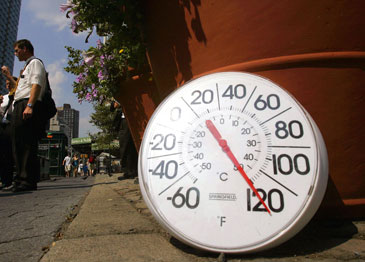
NEW YORK (FinalCall.com) – New York City is probing the heat-related deaths of 26 people, mostly elderly, in the last few weeks, according to news reports. All of the deaths were caused by hypothermia (or heat stroke), according to the medical examiners’ office.
The last time the city had a heat wave that killed so many people was in 1999, when 32 died. Mayor Michael Bloomberg said that the city would investigate the deaths and the Office of Emergency Management would decide if any of them could have been prevented.
Sort of a sad commentary on the times we are living in, Ron Petersen, of the International Preparedness Network, told The Final Call. “Am I my brother’s keeper?” he asked. “Who will take ownership of this issue and begin to show some leadership?”
The institutions, which have more than a casual impact on the culture of our communities–churches, sororities, fraternal groups, political organizations, community-based organizations–they are at the forefront of making preparedness happen, he further suggested.
During the renovation of several buildings in the city’s metropolitan area, one of the things in which Mr. Petersen involved himself was to ensure that seniors and the disabled were placed no higher than the third floor. He noted that there have been other housing entities trying to do the same thing.
“We simply call this love and sensitivity,” he stressed.
“You want to know how serious the city took this latest heat wave?” offered Rudolph Muhammad, a member of the Fire Deparment’s Emergency Medical Service and head of the Nation of Islam’s N.Y. office of the Ministry of Health. “We were mandated to work two shifts for at least five days during the heat wave. They pulled people from other assignments, so that we would have extra units on the street,” he told The Final Call.
“I don’t believe that people see a heat wave through the lens of disaster preparedness,” he further noted.
“Primary care physicians and general internists who typically see most of the older people in communities should take the opportunity to educate elderly patients and their families about coping with the heat,” writes Dr. Sharon Brungina, M.D. of the State University of N.Y. in Syracuse.
That just may have been the problem with the governor’s office in California, where 160 people perished during July’s hot days. State Senator Dean Florez (D-Shafter), chairman of the Government Organizational Committee which has jurisdiction over emergency preparedness policy in California, plans to question officials on Aug. 16 on why the governor refused to declare an emergency during the heat wave so that relief funding could be made available.
Heat kills about 175 Americans in a normal year, according to Disastersrus.org. “In the 40-year period from 1936 through 1975, nearly 20,000 people succumbed in the United States from the effects of heat and solar radiation. In the heat wave of 1980, more than 1,250 people died. In 1995, 700 people died from heat related circumstances in Chicago, Illinois.” In response to that heat wave, the city initiated its Extreme Weather Operations Plan. The plan lists steps to be taken by city officials during heat waves. Public and private organizations are asked to identify seniors who need monitoring and assistance. Twenty-six people have died from the heat in 2006 in the ‘Windy City’.
Philadelphia developed a similar plan after a disastrous heat wave hit in 1993. The ‘City of Brotherly Love’ has 6,300 block captains appointed by the city, who are asked to check on elderly neighbors. The city’s “Heatline Initiative” is a telephone-based service where nurses are standing by to assist callers that may be experiencing health problems. The city also has the “Cool Homes Program” for elderly low-income residents, which provides non-mechanical measures that save energy and lower costs.
“Our elderly have an issue with resources. Some of them have to come down many flights of stairs, because elevators aren’t working, or they have to walk several blocks, due to where these centers are located,” observed Mr. Muhammad.
A study released by Ohio State University suggests that older individuals living in neighborhoods in commercial decline may be at greater risk of suffering heat-related illness.
In the study “Neighborhood Social Processes, Physical Conditions, and Disaster-Related Mortality: The Case of the 1995 Chicago Heat Wave,” sociologist Christopher Browning said the elderly who stay home in the heat are often acting rationally. He observed, “Many times the older folks don’t want to leave their apartments because they have gotten conditioned to being afraid of the community.”












